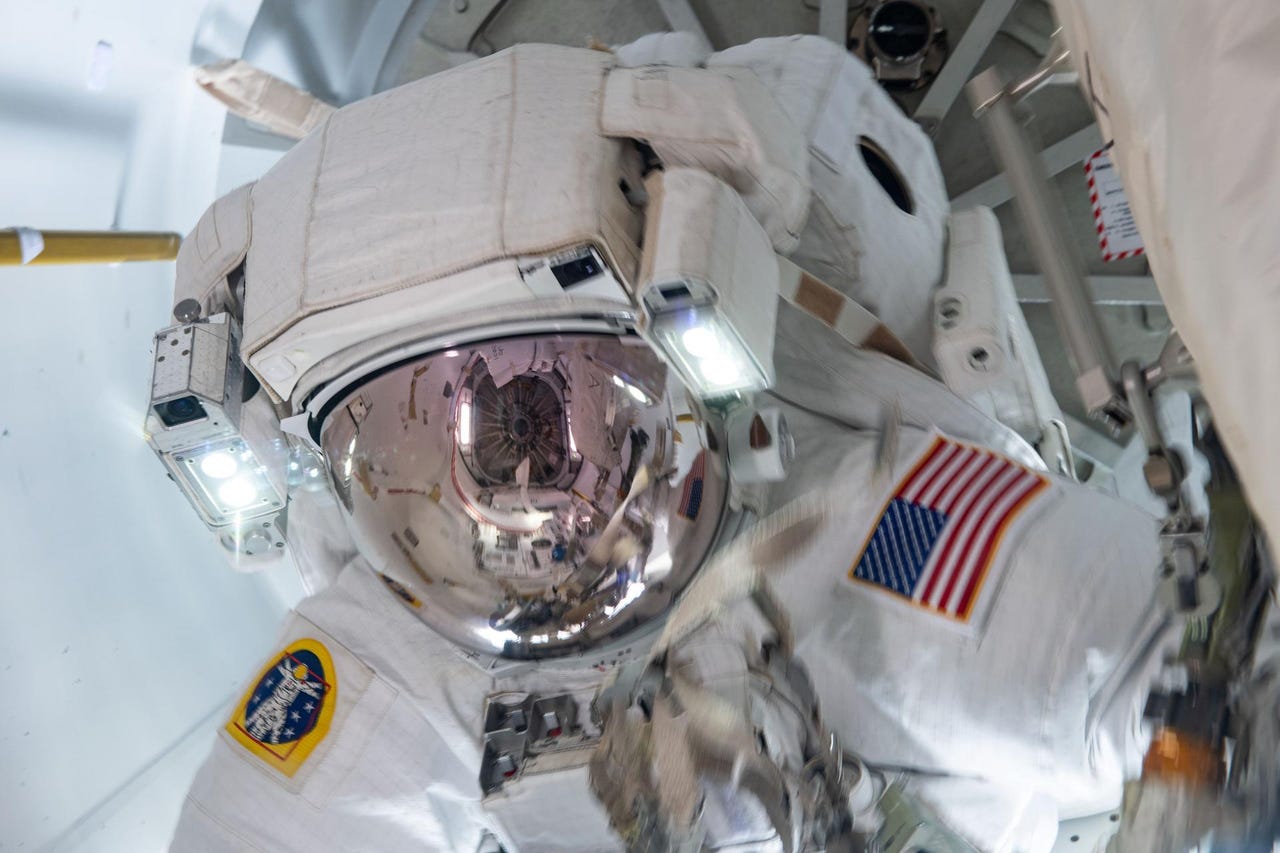































 NASA
NASA NASA is nearly ready to kick off its Artemis mission, a multi-stage quest to send astronauts to the Moon and beyond. As the agency approaches its launch date for Artemis I -- an unmanned flight around the Moon -- it's also preparing its astronauts to spend time on the lunar surface.
Preparing to go to the Moon is about as intense as you would expect: NASA's team of 42 astronauts and 10 astronaut candidates are going through rigorous training that involves landing Army helicopters, studying rocky terrain in areas like Iceland, spending extended periods at the bottom of a pool and training in VR simulations.
NASA has yet to decide which astronauts will travel to the Moon. However, the agency said Friday's it's aiming to launch the Artemis II mission in 2024 -- that mission will send astronauts on a lunar flyby test, making it the first crewed mission to go beyond low Earth orbit since 1972. Then, in 2025, NASA should launch the Artemis III mission, sending the first woman and the first person of color to the surface of the Moon.
The Artemis program doesn't end there, NASA's chief astronaut Reid Wiseman said Friday. After that, the program is designed to support "the first humans tracking out to Mars and putting our footsteps and building science laboratories and inhabiting another planet.
"To me, it's just the most awe inspiring moment that we have had here at NASA," Wiseman added.
At a press briefing Friday, Wiseman outlined the elements of the astronauts' training. First, they're spending time with the Army, practicing how to land a helicopter in snow.
"In order to land on the moon, in order to land on Mars, we're going to come down pretty much vertically," he explained. "Whether it's SpaceX Option A, building their human lander for the Moon that we will fly, or other contractors that are coming online to take subsequent missions, we're almost certainly going to come down vertically."
As for landing in the snow, he said the purpose was to answer, "What does it look like to be whited out, like you would be on the surface of Mars or on the surface of the Moon? And just a few hours in helicopters, it is amazing how much you learn, how quickly you learn."
Meanwhile, NASA participated in a European training session a few months ago called Pangea, which helped them prepare to study lunar geology. The agency, Wiseman said, has to consider how it will get lunar rock samples, retain them and catalogue them for the scientists on Earth.
"It's a totally different way of thinking in a geologic timescale," he said. The agency also trains a lot in Iceland, he said, calling it "a very good analogue to the lunar surface."
Next, NASA's astronauts are using their virtual reality lab to prepare for landing at the Moon's South Pole.
"If you've ever looked at the Moon at night, the South Pole has a very weird sun angle -- very weird light that hits it," Wiseman said. "There's permanently-shaded regions, and we have developed in the virtual reality world what it actually looks like, with the exact sun angle that we'll be landing at. And it is crazy weird."
Wiseman continued, "The bottom half of you can be in absolute blackness, and the top half of you can be in blinding sunlight. The way shadows are projected across the lunar surface, it just changes literally everything. So in this virtual reality world, we can go in there for 10 minutes, and you can answer 1,000 questions."
For another simulated experience, NASA is currently outfitting the Orion crew trainer at the Johnson Space Center. It will be ready later this year, preparing crew to fly aboard the Orion spacecraft.
Just 10 minutes North of the Johnson Space Center, astronauts are training at NASA's neutral buoyancy laboratory -- a very large pool where astronauts have been training for International Space Station spacewalks for two decades.
"Now we're taking a portion of that pool and looking at what it would look like to be on the Moon, to spend six hours in a lunar class spacesuit doing research on the bottom of a pool," Wiseman said.
Of course, NASA also has astronauts aboard the ISS -- there are currently four -- which also prepares them for the journey to the Moon.
Wiseman said the agency hopes to choose which astronauts will fly aboard Artemis II later this year. For all of the Artemis missions, the agency will primarily consider technical expertise, he said -- "the ability to dive into literally any situation, any technical need of the vehicle, to understand when things aren't going quite right, and to understand when they are."
Beyond that, he said, NASA is looking for team players who can work well with each other and flight directors. Wiseman also stressed the significance of sending a diverse crew to the Moon, also noting that the incoming class of astronauts represents "all walks of life."
"Our job at NASA is to do the things that are difficult, and to do the things that are right, and to motivate our base, which is our youth," he said. "And right now our country is a diverse and extremely rich country... We want every kid in America to look at our poster and say, 'Oh, I see myself in that... I can do that someday."
 Tags chauds:
Innovation et Innovation
l’espace
Tags chauds:
Innovation et Innovation
l’espace